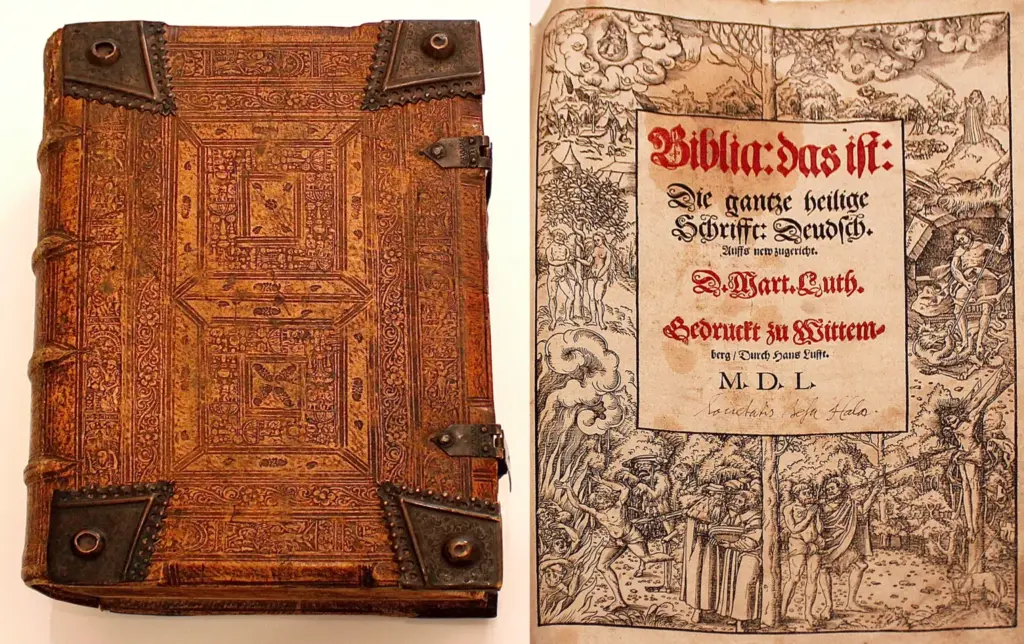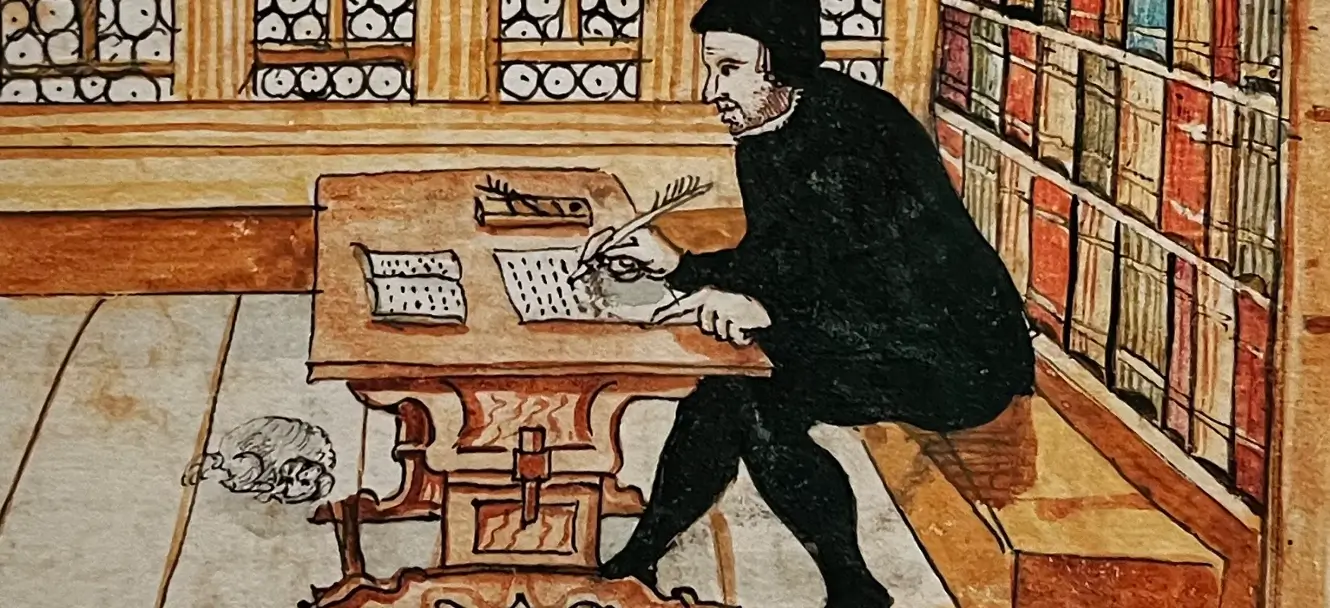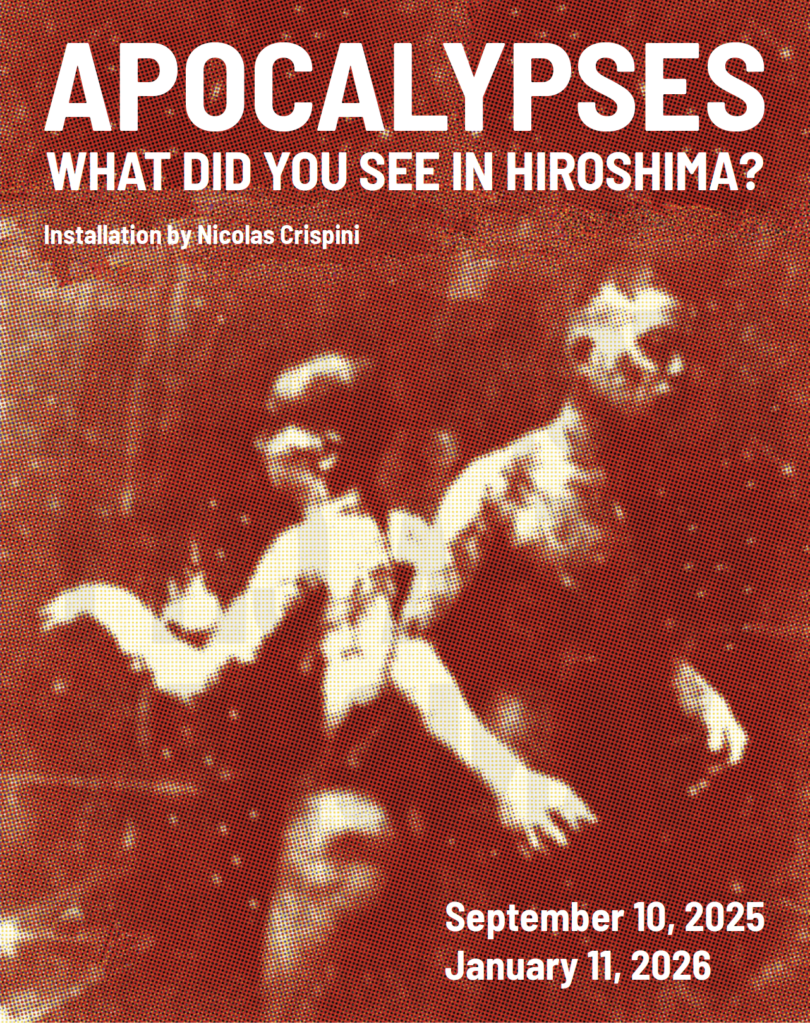Treasures
Luther's Bible
This Bible by Martin Luther, printed in Wittenberg in 1550 (the first edition appeared in 1534), was placed in a room at the MIR. Large in size, it is in a splendid period binding with several motifs.
The frontispiece engraving of Luther's Bible depicts various scenes from the Old and New Testaments, placed in opposition. This type of antithesis was very often used in Reformation propaganda. The contrast between the Law and the Gospel, or the Old and the New Testament, is one of the most effective doctrinal representations of the school of the artist Lucas Cranach the Elder.
The visual space is divided in the center by a tree to the left of which the Law is depicted as expounded in the Old Testament. On the left, Adam and Eve eat the fruit of the tree of life after being tempted by the serpent. Below, the result of this original sin: the man is prey to death and to the devil wearing a cardinal's hat, and pursued into the jaws of Hell, in the flames of which burn a monk and the pope wearing his tiara. This representation illustrates the Man under the Law, recalled by the presence of Moses holding the tables of the Ten Commandments, with other prophets of the Old Testament behind him. At the very top left, a cloud in which Christ is seated as the Lord of the world and, below, the scene of the bronze serpent, the figure of Christ's death on the cross. The dark message of the Old Testament and of the Law, which only condemns man, is also illustrated by the branches of the central tree, bare on the side of the Old Testament.
In opposition to the harshness of the Law, the Gospel brings hope, as signified by the blossoming branches to the right of the central tree, on the side of the New Testament. At the very top right, Mary receives the rays of divine grace, signifying the incarnation illustrated by an angel carrying the cross in his direction. In the background, an angel brings news of the Savior's birth to the shepherds on the hills in Bethlehem. In the center, the resurrected Christ defeats death and the devil; placed in opposition to Adam and Eve, defeated by the serpent, it is now he who defeats the diabolical beast. Below, the Crucifixion. Christ on the cross sheds his redeeming blood like a stream upon man. It is the figure of Saint John the Baptist who, with his finger, draws man's attention to the sacrificial death of Christ. Below the Crucifixion is the Passover lamb, symbol of the victorious death of Christ.
This scheme (sometimes with slight modifications in the layout of the scenes, or even polemical additions as is the case here with members of the Catholic clergy represented in Hell or a devil wearing a cardinal's hat) became one of the themes the most popular of the Reformation, particularly for the illustration of the title pages.
Luther's Bible

This Martin Luther Bible was printed in Wittenberg in 1550. Large format, it is in a splendid period binding.
Luther's Bible, Wittenberg, 1550
© International Museum of the Reformation (MIR), Geneva

I make a bird for peace
On 21 September 2025, the International Museum of the Reformation joins the International Day of Pe...
RegistrationAll events






 Google Analytics & Pixel Facebook
Google Analytics & Pixel Facebook
